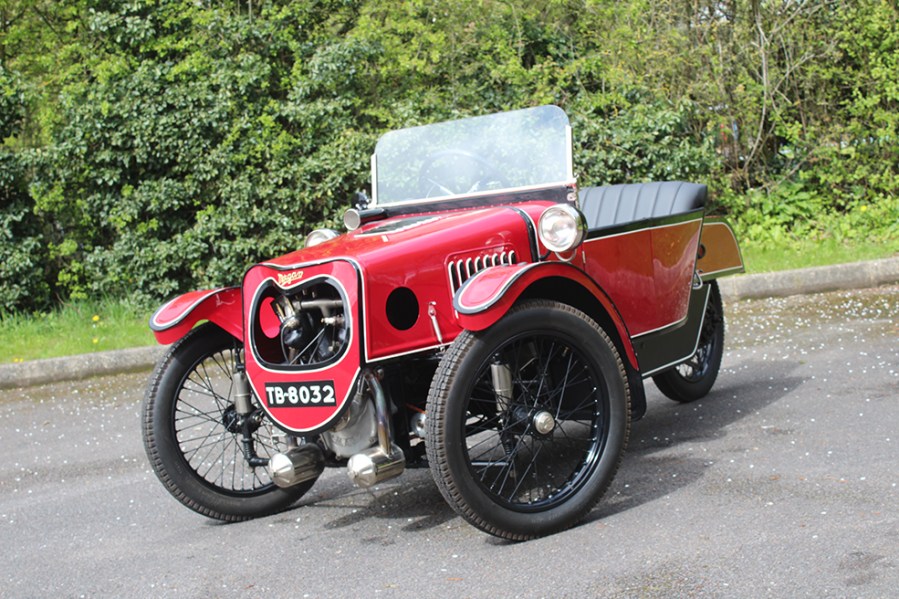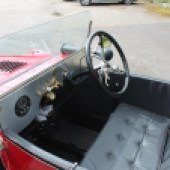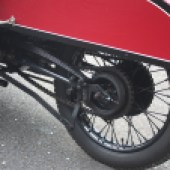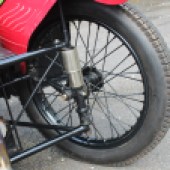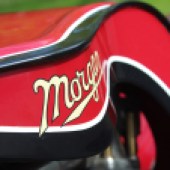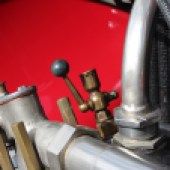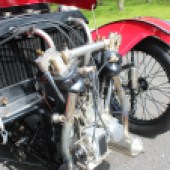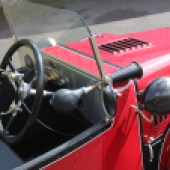Delightfully idiosyncratic and over 100 years old, this Morgan Runabout offers a look back in time at Morgan’s three-wheeled roots
Words and images: Jack Grover
Although synonymous with sports cars for most of its history, Morgan started off making diminutive three-wheeled cyclecars. But founder ‘HFS’ Morgan was always a bit of a speed freak, and from the very beginning his cars were renowned for making the most of their minimal weight.
The 1920s Runabout was essentially unchanged from HFSs’ original prototype. An offering of engines of different sizes, outputs and manufacturers allowed buyers to opt for economy, performance or something in between at various prices, and specifications ranged from the standard, and very basic, Runabout, through the Runabout Deluxe (as tested here, with a windscreen, hood, rear view mirror, electric lighting and a tool kit) through to the streamlined and race-ready Aero.
For a vehicle that’s over a century old, this Morgan is remarkable in only having two confirmed owners, if you don’t count the supplying dealer on the surviving buff logbook issued in January 1925. The Runabout wouldn’t change hands until the early 1980s, by which time it was in a complete but rather worn state.
The new owner stored the vehicle until 2007, when it was restored using the services of two of the best-known specialists in the world of vintage Morgans – Bob Barlow and Bob Angell. The work was completed in 2010 and the Runabout was mostly kept on static display after that. It changed hands via auction in late 2022 and Sherwood Restorations has now carried out some light recommissioning to ready it for the road.
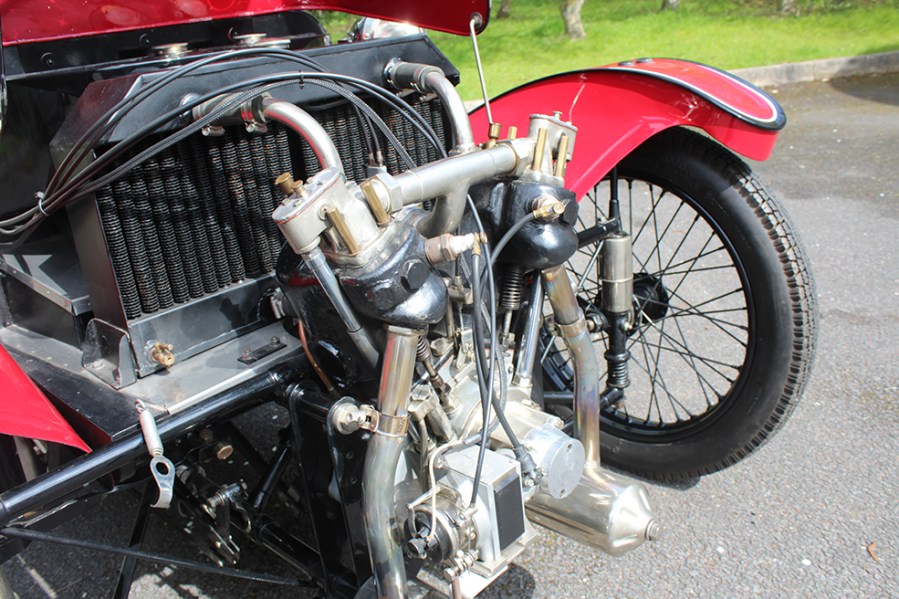
The passing of 13 years since the restoration has left no sign on the cosmetic condition. The bright carmine red paint edged with black and white lining is more like something you’d see on a steam locomotive or a fairground ride, and it has a stunningly deep and even sheen. The woodwork was renewed during restoration and the metalwork taken back to bare metal. It all remains in perfect condition.
The ‘interior’ such as it is, consists of the wooden sides and floor, plus a polished metal sheet that serves as the dashboard. There is one small door on the left-hand side, and a narrow, steeply raked bench seat providing snug space for two. This was all replaced, retrimmed and repainted during the restoration and remains in excellent condition, right down to the wooden floor pedals with the metal ‘M’ logos rivetted on. The only instrument is an ammeter unless you count the sight glass for the oil feed.
The water-cooled Swiss-made MAG engine was available in two capacities, with the 1.1-litre one here being the larger. Offering a good compromise between running costs and performance, this inlet-over-exhaust unit was renowned for its quality, reliability and smooth running. However, it was also expensive to buy while not having the same outright performance as a larger, but cheaper, JAP engine.

Fully rebuilt during the restoration and barely run in since, the engine presents a beautiful but baffling array of polished metal rods, taps, plugs and valves.
All of these need to be mastered to get the thing running, as well as the throttle, mixture and ignition timing levers on the steering wheel. Petrol needs to be squirted into each of the priming cups on each cylinder head, the taps for the oil and fuel feeds need to be turned on, the AMAL carburettor needs to be tickled and the starting handle needs to be inserted into its slot just behind the cockpit (it turns the engine via the transmission).
Then, if everything’s set right, you set the magneto switch on, squeeze the decompressor handle mounted on the outside of the cockpit, heave the handle round, release the decompressor and the thing shakes and shudders into life, emitting almost as much smoke from the front end as it does from the back. More juggling of the various levers is needed as it warms up, and you need to adjust the oil feed so there’s a steady drip rate visible in the dashboard sight glass (oil is dripped into the main bearings and burnt off, so both petrol and oil tanks need regular replenishment). This is not the sort of car you can quickly ‘just pop out’ in. Then you can set about finding bottom gear with the simple back-and-forth lever…

Morgan Runabout: our verdict
It’s hard to do justice to the full experience of driving, let alone mastering, a car as idiosyncratic as an early Morgan. The starting procedure alone will be enough to put some people off. But others will be intrigued, and if you’re one of them then you couldn’t ask for a better example of a car from an entirely different era.

